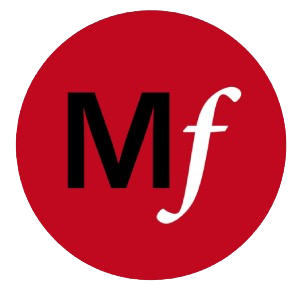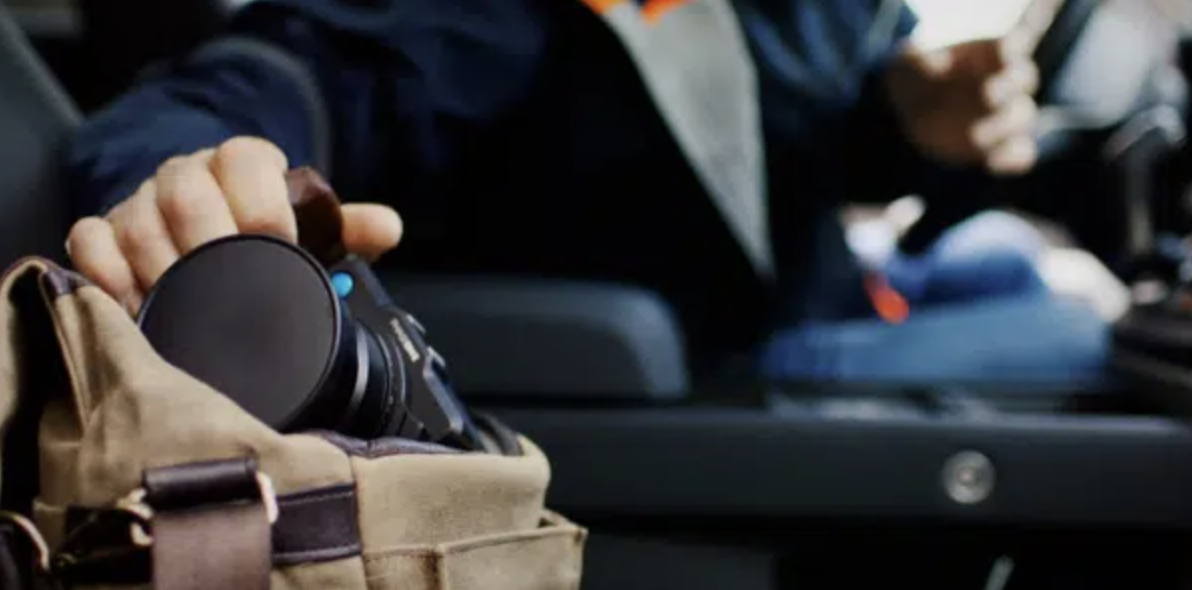If you think the go-anywhere Leica Q3 is a touch pricey at £5,300, you have obviously missed the announcement of the Phase One XC. It is another camera that is “unobtrusive and accessible” and designed to “complement your journey”. According to PhaseOne, this new paragon has a travel-friendly design. It “takes you anywhere, captures anything and is always by your side”.
This 151MP behemoth, with its super medium-format sensor measuring 53.4 x 40 mm (compared with Fuji’s GFX standard of 43.8 x 32.9), offers just one focal length. That’s about all it has in common with the Leica Q. However, the fixed Rodenstock HR Digaron-S 23mm f/5.6-22 lens is effectively nearly twice as wide as the 28mm f/1.7 Summilux of the Leica. The effective full-frame equivalent focal length of the Rodenstock is an ultra-wide 15.5mm.

To crop or not to crop
PhaseOne reiterates Leica’s mantra that one wide-angle lens offers versatility because of its ability to crop effectively. And, in theory, with the huge sensor at 151 megapixels, cropping more than makes up for the wider fixed lens. We took an in-depth look at the crop capabilities of the Leica Q3. Owners of such wide-angle fixed-lens cameras seem to like the idea. I certainly find the feature useful on the Leica. Yet, despite the ability to zoom in optically, we are still using a wide-angle lens, and there is nothing we can do to change that.

The PhaseOne XC is, without a doubt, an impressive camera. But price alone puts it out of the reach of most photographers, even most Leica photographers. They are accustomed to being top of the price tag pile, but now they are the poor relations. The £50,000 cost of the PhaseOne XC makes the Leica Q3 look like a Box Brownie, a true camera for the masses.
Phase One XC: Reality check
Stunning as this camera is, we have to take a reality check on the claims of go-anywhere, constant-companion promotional material. This angular compact has a weight to go with the price tag — no less than 1,820g, nearly 2.5 times the weight of the Q3. It’s even heavier than the Leica SL2 with an equivalent lens, never mind the positively svelte Q3.
With its 151 MP sensor, it is doubtful that the Phase One XC is a good tool for casual go-everywhere shooting for one more reason. Its sensor is huge, with 2,136 square millimetres, but the pixel pitch is pretty identical to the one in a contemporary 61 MP full-frame camera. We all know that these ones are demanding to shoot without stabilizing devices (be it in the camera, be it a tripod) if you fancy a really sharp image. And, after all, you want sharpness on the 1:1 pixel peeping level if you fork out 50k for a high-res camera, don’t you?
The Phase One XC favours 4:3 aspect ratio
Another interesting aspect is the 4:3 aspect ratio of the sensor. The 3:2 standard, set by Leica almost 100 years ago, gets new competition. As was the case with 6×7 medium format, 6×6 of course, and then in the digital age, the Olympus Four Thirds system back in 2002 with their E-1 camera. Maybe it will remain a matter of taste whether you prefer the wider or, the more compressed ratio. In any case, you certainly have enough headroom for cropping…
What’s your view? Are you sufficiently impressed by the PhaseOne XC to consider shelling out £50,000 ($64,000, €58,500)? If you are phased out by the 60MP of the Leica Q3, how do you react to having 151MP at your disposal?
Here is a rather vapid promotional video for the new PhaseOne XC. It tells us little, except that the keen owner totes the hefty camera everywhere (without a strap in evidence) and hops on and off helicopters without a care in the world. But then, if he can afford an XC, what’s a helicopter ride or two? At least it gives you an opportunity to check out the XC in the hand.
Why is the Phase One XC so expensive?
More on the Leica Q3
More on the Ricoh GR III, another go-anywhere fixed-lens compact
A cup of coffee works wonders in supporting Macfilos
Did you know that Macfilos is run by a dedicated team of volunteers? We rely on donations to help pay our running costs. And even the cost of a cup of coffee will do wonders for our energy levels.


For a while I shot a Phase One P30+ digital back on a Hasselblad H body, still CCD at the time, so limited high ISO performance but excellent image quality, prices were crazy but not stupid like now. B&H, Adorama and a few specialized dealers carried their products, now not so much anymore but I have to assume there is still an audience…? About medium format, if Leica ever releases their rumored new mirrorless medium format camera (after letting the S system linger for over a decade…) I wonder whether they will go after the Fuji/Hasselblad crowd, or after the Phase One crowd, or try to carve an entirely new niche altogether.
“if he can afford an XC, what’s a helicopter ride or two” – yeah but he did have to sell his car to buy the XC….
(any new-looking Swiss car with “AI” plates is almost always a hire car 🙂 )
Not Too Shabby!
This is not unlike fantasizing about the lottery, it’s fun to think about all the fun things with this camera. Astrophotography, landscape with exaggerated foregrounds, street, then the reality, it’s the price of a nice car or a lengthy luxury vacation. If it shows up on the used market and the prices tumble similar to the Leica S system, perhaps.
Hold on a moment ..hold on a moment ..the 23mm is a “wide-angle” lens?
“..the fixed Rodenstock HR Digaron-S 23mm f/5.6-22 lens is effectively nearly twice as wide as the 28mm f/1.7 Summilux of the Leica..”
Hold that thought.
A ‘normal’ or ‘standard’ lens – like a 50mm or a 40-ish mm – is usually defined as pretty much equal to the diagonal of the film frame. The diagonal of a 36mm x 24mm so-called “full-frame” sensor – equal in size to a frame of film of the original Leica – has a diagonal of 43.26mm.
Remember the old Pythagoras theorem from school? “The square on the hypotenuse of a right-angle triangle is equal to the sum of the square on the two adjacent sides”..?
Meaning that if you multiply 36mm by itself (equals 1,296) and you multiply 24 by itself (equals 576) and you add those together (equals 1,872) and you get the square root of that (from your iPhone’s ‘Calculator’ app ..turn the phone sideways onto its long edge, and you get the ‘scientific’ display, including square roots..) or you type into Google “square root of 1872” – the answer is that the square root of 1,872 is 43.26.
Let’s do that with the dimensions of the PhaseOne XC.. 53.4mm squared is 2,851.56, and 40mm squared is 1,600. Add them together, and that equals 4,451.56. The square root of that is 66.72.
Well, I’ll be darned: so 23mm, being the XC’s lens, is about one third the focal length of the sensor’s ‘normal’ or ‘standard’ lens ..and so is pretty much equivalent to a 14mm wide-angle on a “full-frame” sensor or frame of 35mm film! (But with a fair bit of vignetting, looking at the huge enlargement displayed at the end of that promotional video ..unless the vignetting’s been purposely ‘burned in’.)
I’ll be jiggered: 14mm – almost my favourite focal length ..same as the 7mm of the 7-14mm zoom for micro-four-thirds – and for only £50-grand, and only 1.8 kilograms!
Er, I think I’ll keep my Olympus (digital) OM-1 and its Panny Lumix 7-14mm lens, at 900 grams (half the weight, and a fraction of the price) which has an actual viewfinder, a tiltable rear display, terrific stabilisation – up to 7x (so doesn’t need the tripod shown in the video), has a 4:3 sensor, like the XC, which is normally 20 megapixels BUT can shoot hand-held at 50 megapixels (or 80 megapixels on a tripod, but I don’t use one), and also shoots stereo audio as well as the usual video options (..and up to 240 fps slo-mo).
Oh, and I forgot ..the Oly has autofocus too, besides the manual-only focus of the XC
I could, of course, use the usual 9mm, 10mm, 12mm, 15mm, etc, Voigtländer wide lenses on an M Leica.
So what’s the Unique Selling Point of the XC..? 151 megapixels? ..For big prints? ..For cropping? ..Well you’d have to crop if you want anything less wide than a 14mm equivalent.
Let’s say you wanted a 28mm equivalent: you’d throw away half the pixels, leaving you with 75.5 megapixels. But if you wanted a 90mm equivalent, that’d drop you down to about 20 megapixels ..so, no different from almost any mainstream camera with a 90mm lens on it!
..But 90mm for £50,000.
My point is: ahahahahahaha!
I really don’t think that this is a camera I need or want. But if I were shooting 14mm equivalent wide-angle pics for billboards ..er, no: I think I still wouldn’t need it.
Important to have two, in case one runs out of battery! On a more relevant note, you would be fine printing that size with a Q3 as well!